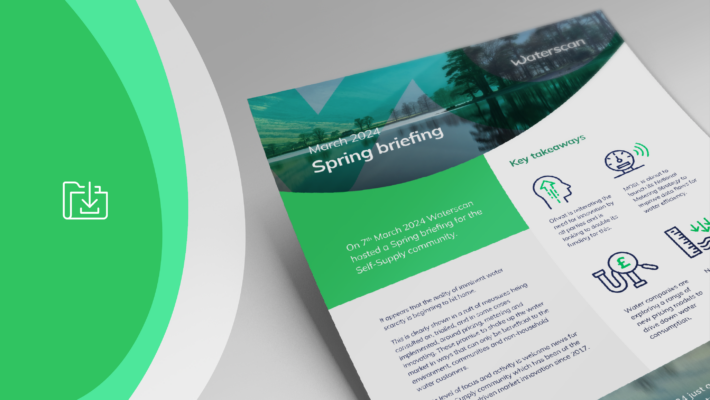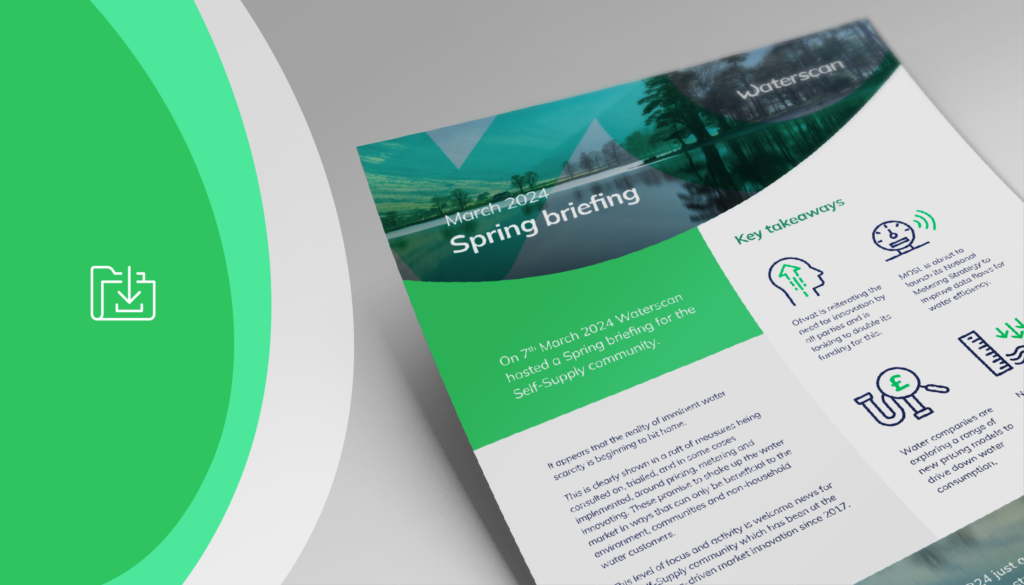The Self-Supply community convened for its Spring Briefing on 7th March, welcoming speakers from market regulator Ofwat and market operator MOSL.
Judging by the raft of initiatives that are being consulted upon and trialled, and with evidence of greater collaboration, there was a sense that the market is really beginning to move forward, leaving behind longstanding concerns around how it functions to how it can achieve more.
Nick Hayes, Commercial Director at Waterscan, reported that Self-Supply market performance continues to be considerably higher than overall market average. A very low level of long-unread meters across the combined Self-Supply estate, along with strong wholesaler engagement and bilateral resolution are working to ensure that customers can focus on effective water management as opposed to time-consuming administration.
Elsewhere across the water market, there’s a great deal of activity around pricing, metering and innovating, all focused on addressing the prospect of water scarcity. This is all welcome news.
Ofwat’s Shaun Kent updated the group on the regulator’s current initiatives. Choosing to focus on the critical role that innovation will play in delivering optimal outcomes for customers, communities and the environment, he revealed Ofwat’s plan for a new £400 million innovation fund to drive improvements in water management. He also mentioned work that Ofwat is doing to improve customer protections in the market. These include strengthening minimum standards and reviewing retailers’ financial resilience and governance arrangements.
Martin Hall and Adrian Smith presented MOSL’s soon-to-be-launched National Metering Strategy for the Non-Household Market. In creating this strategy, MOSL has identified significant challenges which suggest that a full rollout is likely to take a decade to achieve, reducing its impact on progress towards DEFRA’s target to reduce all non-household water use by 9% by 2038. Nonetheless, this industry-wide focus on improving data flows is positive for all water customers.
Waterscan speakers Matt McLeod, James Goodall, Esmond Bowerman and Sindiso Bango-Dube presented updates on their fields of expertise including metering, data, drought management and pricing.
Goodall’s analysis of the impacts of wholesale price increases applicable from April revealed that customers should be budgeting for an average increase in bills of 10% from water and sewerage companies, and 7% from water-only companies. Looking further ahead, Price Review 24 plans suggest that there will be much higher price hikes on the horizon. Between 2025 and 2030, wholesale water prices could jump by up to 66%, with wide variation expected from one region to another. Although nothing will be set in stone until this December, companies and organisations should seek expert guidance to mitigate the impacts of these price proposals.
A meeting report can be found here.





